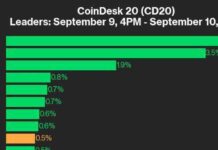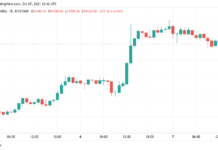VanEck has introduced a new feature for its Solana exchange-traded note (ETN) VSOL in the European market. This move aims to provide passive income opportunities for investors through staking rewards. Matthew Sigel, head of digital asset research at VanEck, announced the launch on Oct. 21. Investors can now earn rewards that will be reflected in the daily net asset value (NAV) of the ETN.
The staking rewards will automatically be included in the VSOL token’s equity and integrated into its daily terminal value. Investors will receive 75% of the gross staking rewards, with a 25% deduction for VanEck’s staking fee. This passive income feature is open to all VSOL holders, regardless of when they invested, and does not require any additional action from investors.
VSOL is a crypto ETN designed for European investors and was established in Liechtenstein. It was launched in September 2021 on Deutsche Börse, a prominent stock exchange in the region. As of Oct. 18, the ETN’s assets under management (AUM) amount to $73.8 million. The shares are priced at around €8.229 ($8.93), with the NAV at $8.21.
VanEck’s staking approach is fully non-custodial, ensuring that the ETN’s custodian has complete control over the staked assets. This helps eliminate lending risks that could potentially affect investors. Client funds are delegated to validator nodes managed by a third-party provider, allowing the SOL tokens held by the ETN to be staked while the custodian maintains control over the assets in cold storage.
Looking ahead, there may be future developments involving the use of liquid staking tokens (LSTs) like jitoSOL. Currently, VanEck relies on an internal dynamic risk model to ensure liquidity for daily redemptions.
Overall, this new staking feature from VanEck presents an opportunity for European Solana ETN investors to earn passive income through staking rewards. With a non-custodial approach and potential future developments in the pipeline, investors can benefit from this innovative offering while mitigating risks associated with asset management.














